It’s that time of the year when many of us are waiting for color to show up on nature’s landscape.
We’re thinking about what to plant around our homes and counting down the days until plant nurseries fill up with colorful flowers.
We’re also looking forward to seeing the return and emergence of popular insects and some of the birds we miss during the cold winter months.
This is the season when we enjoy spending time outdoors in our backyards and natural places the most. The sights and sounds of busy happenings in nature abound!
You can bring the best of this time of year to your property by planting native plants.
What is a Native Plant?
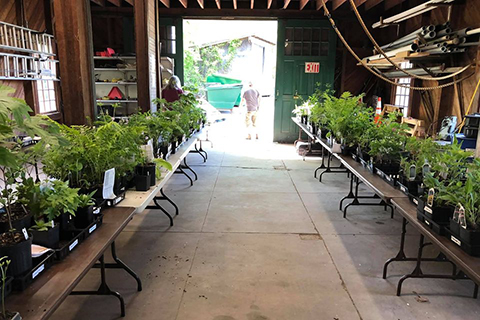
Native plant sale at Kings Gap Environmental Education Center
Just because plant nurseries sell the same plants and flowers we’ve all grown up with doesn’t mean they are native.
Native plants are the plants that occurred within this region before colonization by Europeans.
These native plants include ferns and clubmosses; grasses, sedges, and rushes; flowering perennials, annuals, and biennials; and trees, shrubs, and vines.
More than 2,100 native plant species make up the botanical diversity of Pennsylvania. Native plants are the reason our native insects and wildlife have continued to survive.
One of the best ways we can help wildlife, including the pollinators and birds we enjoy seeing at home, is to grow native plants.
You won’t be sacrificing the beauty and color many non-native landscaping plants display.
Native plants are unique, offering many shapes and sizes of color that bloom across three seasons.
However, the best part of native plants are the native birds and insects they attract, which also provide an important food source for hatchlings/nestlings.
What Native Plants Should I Look For?
While native plants may take a little more effort to find, here are some of the more common and available native plants that will bring life to your yard!
Native Milkweeds
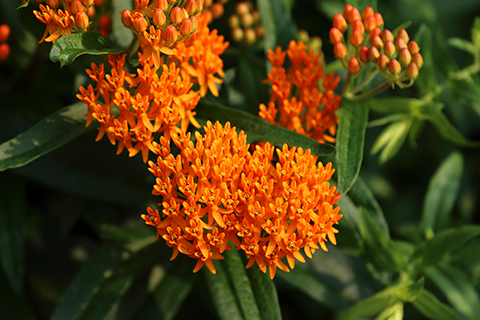
Butterfly milkweed
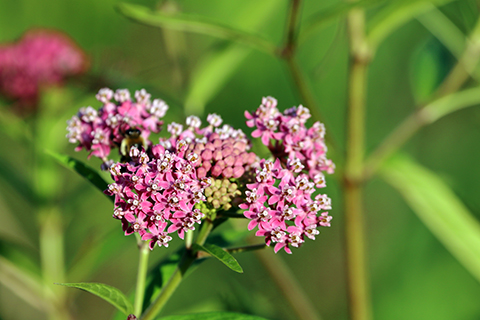
Swamp milkweed
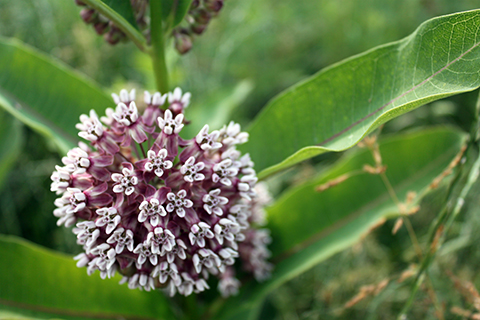
Common milkweed
We have to start with one of the most popular, the native milkweeds. These include:
- Butterflyweed (Asclepias tuberosa) -- blooms late summer to fall
- Swamp milkweed (Asclepias incarnata) -- blooms for long summer
- Common milkweed (Asclepias syriaca) -- blooms June to August
Milkweeds will always bring the popular monarch butterfly to your yard!
Many argue that the non-native butterfly bush attracts monarchs as well, but the milkweeds allow the monarch butterfly populations to grow.
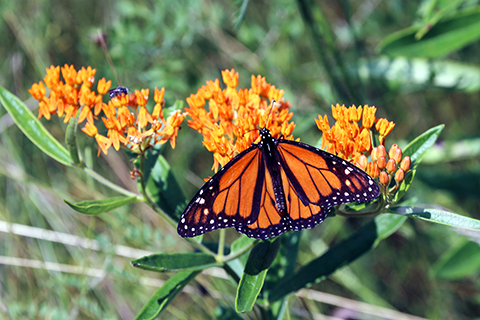
Monarch butterfly
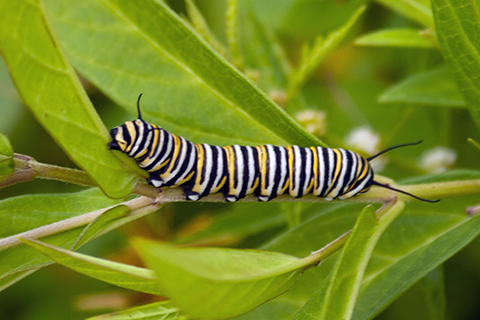
Monarch caterpillar
Milkweed is the only plant where the monarch butterfly can lay its eggs (called a host plant). The eggs hatch into caterpillars and the caterpillars eat the milkweed foliage. By ingesting the leaves, monarch larvae become toxic, and predators avoid them -- allowing their population to grow!
Spicebush
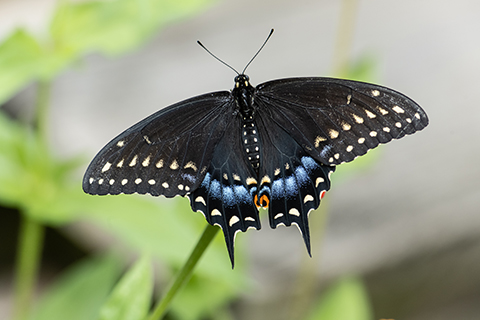
Swallowtail butterfly
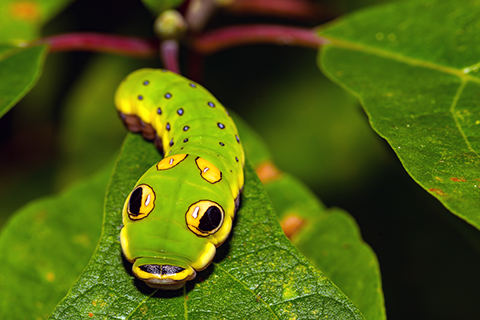
Swallowtail caterpillar
Speaking of native host plants for butterflies, spicebush (Lindera benzoin) is critical for the spicebush swallowtail butterfly. This is where you can catch a glimpse of what might be the cutest caterpillar on the planet!
This relatively easy to grow shrub sprouts small yellow flowers in early spring before its leaves develop. Then in the fall, its fragrant leaves turn bright yellow -- providing color in your yard during the spring and fall.
Female spicebush shrubs will develop red berries in the fall, which is beneficial for many birds, including those migrating. You will need both the male and female spicebush to produce berries.
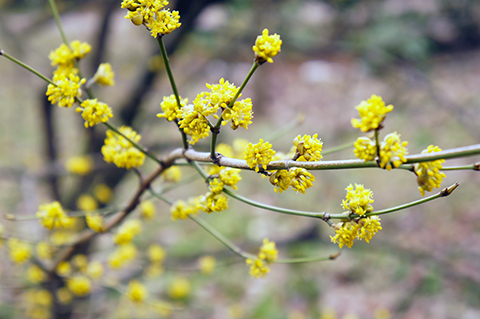
Spicebush in the spring
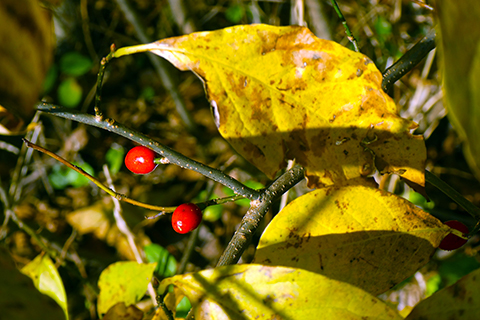
Spicebush in the fall
Spicebush also attracts a variety of birds including Eastern bluebirds, blue jays, grey catbirds, and others.
Eastern Red Columbine
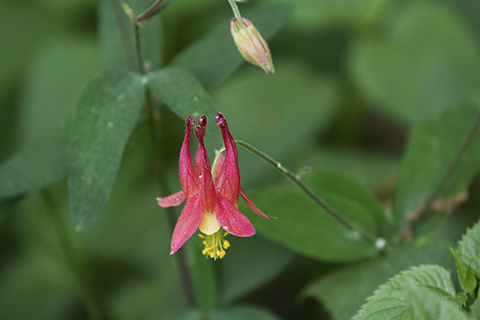
Red columbine
Eastern red columbine (Aquilegia canadensis) is known for its stunning, drooping flowers. It blooms in early spring and will spread on its own by self-seeding -- providing more beauty and benefits for wildlife.
These early blooming native plants provide a much-needed early meal for returning ruby-throated hummingbirds, full of high sugar content and important amino acids.
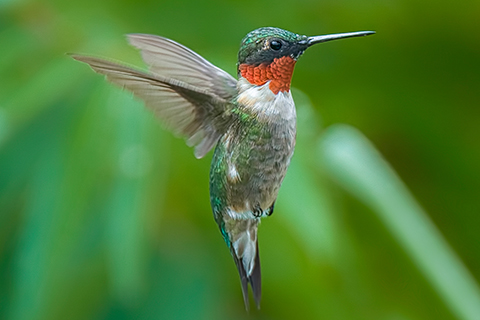
Male ruby-throated hummingbird
Hummingbirds are not the only wildlife to benefit from this plant. Wild columbine also attracts bees, butterflies, and moths.
After the columbine blooms, it will form seeds which are enjoyed by finches and buntings.
Make sure you purchase the native columbine because hybrids are widely available at nurseries.
Eastern Purple Coneflower
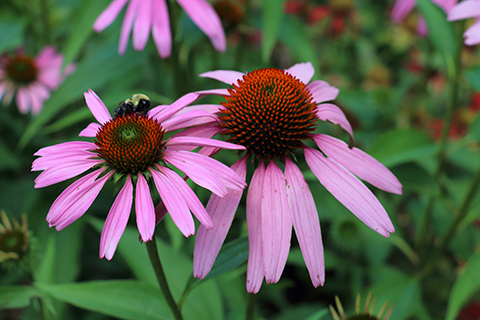
Purple coneflower
The Eastern purple coneflower (Echinacea purpurea) is a hardy and relatively easy plant to grow, and will thrive in harsh conditions.
Its impressive, bright purple flowers last a long time, and its nectar is very attractive to bees, hummingbirds, butterflies, and moths.
Coneflower seeds serve as an important food source in winter for a variety of birds, including sparrows, blue jays, cardinals, black-capped chickadees, downy woodpeckers, juncos, and more.
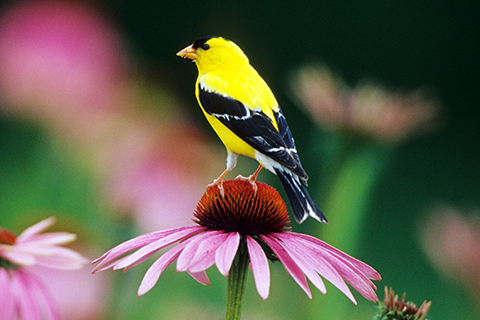
Goldfinch on purple coneflower
Goldfinches are particularly fond of coneflower seeds and will eat them as soon as they ripen. If the birds don’t eat all the seeds, the coneflower will spread on its own, providing more beauty and benefit.
Trumpet Honeysuckle
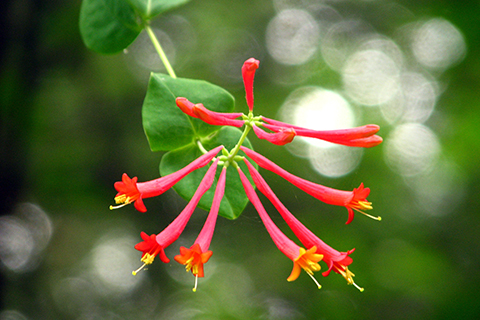
Trumpet honeysuckle
Trumpet honeysuckle (Lonicera sempervirens) is an easy to grow vine ideal for spreading on arbors, fences, or trellises.
Its clusters of red trumpet-shaped flowers can be enjoyed from late spring to mid-summer, and sometimes into fall.
Trumpet honeysuckle flowers are a favorite for ruby-throated hummingbirds, goldfinches, bees, and butterflies. This native vine also is a host plant for the spring azure butterfly and the snowberry clearwing moth (hummingbird moth).
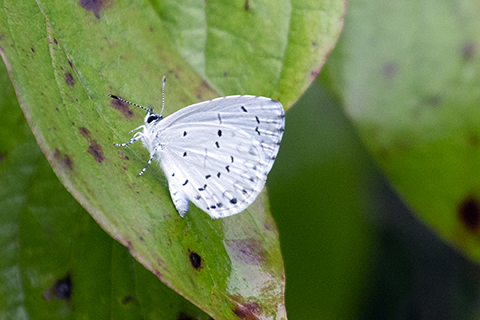
Spring azure butterfly
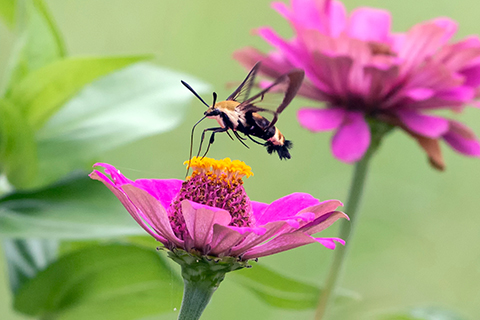
Snowberry clearwing hummingbird moth
After flowering, small red berries develop and attract birds such as goldfinches, hermit thrushes, and purple finches. This native vine also provides shelter and nesting for birds.
Learn More About Native Plants

Bumble bee flying towards native downy skullcap
There are so many more native plants that provide benefits to insects, birds, and wildlife that can be planted on your property.
Try to learn more about native trees, flowers, grasses, and shrubs; plant them; and enjoy the life they bring to your yard!
DCNR’s website provides information about landscaping with native plants, sample native garden templates, and suggestions for where to by native plants.
If you are having trouble finding native plants, ask your local plant nursery -- the more requests they get for native plants, the more likely they are to sell them.